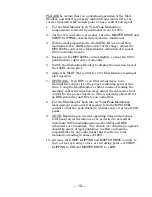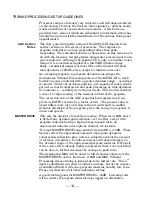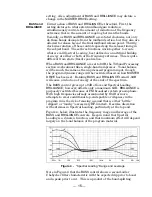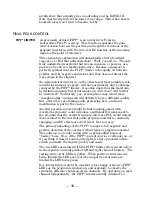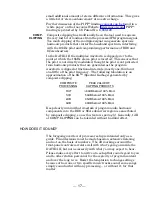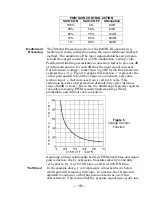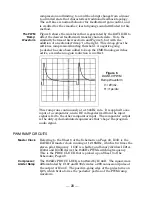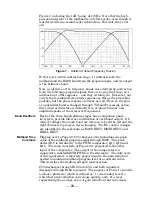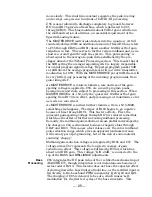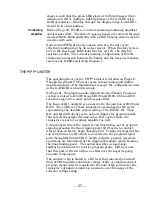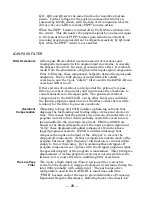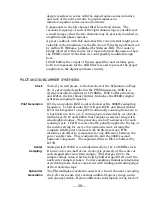
16
architecture that actually gives an advantage in the
DAVID-III
.
Note that the dip falls in the lower voice range. Thus when bass is
boosted voices won t tend to become tubby.
FINAL PEAK CONTROL
PIPP* LIMITER
As previously defined, PIPP* is an acronym for
Polarity-
Independent Peak Processing
. This function separates the gain
control action between the positive and negative excursions of the
program waveform, with the zero-volt DC baseline of the incoming
signal as the point of reference.
This elementary explanation will undoubtedly elicit a horrified
response of, But that adds distortion! Well, yes and no. The only
truly undistorted waveform that we can measure, or perceive as a
pure tone by ear, is a textbook sinewave. Because a sinewave is
perfectly symmetrical, the PIPP* limiter acts equally on both the
positive and the negative excursions and thus does not distort the
wave shape in the slightest.
An asymmetrical waveform, on the other hand, most notably a solo
musical instrument or speech, will have asymmetry and peakiness
removed by the PIPP* limiter. Does this imply that the waveform,
by definition already full of harmonics (ie:
distortion!
) will further
be distorted ? Technically, yes. A saxophone may sound more
saxophone-like and speech will definitely have a different quality.
But, after all, we are talking audio processing here, and sonic
modification is par for the course.
Another possible concern might be that mucking-about with
waveform symmetry could introduce a sufficient DC component to
the program that the exciter frequency-reference PLL would unlock.
Take comfort in the fact that audio program material is constantly
changing, and DC offsets are short-lived. Not to worry.
The primary advantage of the PIPP* concept is full negative and
positive deviation of the carrier with all types of program material.
This adds up to a louder sound with a special added bonus of
beefier bass. Now, if the PIPP* concept worries or offends you, or
if you think it doesn t sound quite right, we have provided a little
switch to disable the feature quickly and easily.
The two LEDs associated with the PIPP* limiter show circuit action
in the separate and independent left and right channel limiters. The
resting state of the LEDs is yellow. When positive excursions are
being limited the LED goes red; when negative excursions are
limited the LED turns green.
It is interesting to watch the constant color change of the two PIPP*
LEDs as the program is worked-on, and especially to observe the
symmetry difference between stereo channels. By operating on each
channel independently, the PIPP* limiter actually introduces a












